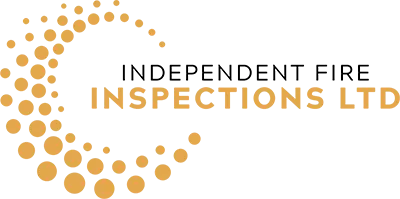
Why Have A Passive Fire Protection Inspection?
Passive fire protection refers to all of the installations, materials and apparatus used in a building design that offers protection against the start and spread of fire, without any need for human intervention.
This can include fire doors and walls, compartmentation, fire resistant coatings and more. A passive fire protection inspection is carried out to assess and ensure the effectiveness and compliance of these passive fire protection measures in any building or structure. These inspections are very important for multiple reasons, as you can see below.
Compliance With Regulations
Building regulations often require the implementation of specific passive fire protection measures. Inspections can help to verify whether the building meets these regulatory requirements and standards. Non-compliance can result in legal and safety issues.
Fire Safety Assurance
Passive fire protection measures are essential for containing and slowing down the spread of fire, providing occupants with more time to evacuate and enabling firefighters to control the fire more effectively. Inspections help ensure that these measures are in place and functioning as intended, enhancing overall fire safety.
Prevention Of Fire Spread
Fire-resistant materials, fire barriers and compartmentation systems play a critical role in preventing the rapid spread of fire within a building. Regular inspections ensure that these elements are intact, installed in line with the manufacturer’s specifications, and not compromised by modifications or damage, minimizing the risk of fire escalation.
Protection Of Property And Assets
Fires can cause significant damage to buildings, infrastructure and valuable assets. Passive fire protection measures help mitigate the impact of fire by containing it within specific areas, reducing the extent of damage. Inspections help identify any deficiencies or vulnerabilities in these measures and enable timely repairs or improvements.
Insurance And Risk Management
Insurance providers often require evidence of fire safety measures, including passive fire protection, to assess risk and determine insurance coverage and premiums. Regular inspections and compliance with recommended fire protection standards can positively impact insurance coverage and costs.
Maintenance And Longevity
Passive fire protection measures, such as fire-resistant coatings, seals and doors, require regular maintenance to ensure their effectiveness over time. Inspections help identify any wear, damage, or degradation that may compromise the performance of these measures, enabling timely repairs or replacements.
Overall, passive fire protection inspections are crucial for verifying compliance with regulations and ensuring fire safety. They can help to prevent fires spreading, offering enhanced protection of property and assets, as well as managing risk. If you would like to maintain the effectiveness of passive fire protection measures in your building, then get in touch with a member of the IFI Group team to discuss your inspection options.
Image Source: Canva
